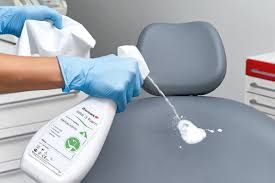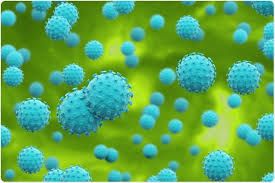The success of prevention and control of infection and its spread is largely dependent on aseptic technique of all personnel involved in basic procedures. The sterility of all items are directly concerned in such clinical procedures and the disinfection of all surfaces and items in the immediate environment or vicinity.
Definitions of some important terms in infection control such as; Asepsis, Disinfection and Sterilisation are highly important as basic knowledge for dental students.
1- Asepsis:
It is the avoidance or a state of lack of pathogenic organisms which help to prevent contamination of wounds and other sites by ensuring that only sterile equipment, objects and fluids come into contact with them and risk of airborne contamination is highly minimised.
2- Disinfection:
"Disinfection describes a process that eliminates many or all pathogenic microorganisms, except bacterial spores, on inanimate objects"Source
3- Sterilisation:
It is a process of destroying or removing all organisms using physical and chemical or any other form of procedure.
It is usually used to clean up the dental instruments and make them harmless and non-lethal to both the clinician and the patient.
4- Infection:
Infection can be defined as deposition and growth of organisms in the tissues resulting in local cellular injuries and damages.
The number of of organisms required to cause an infection is referred to as an infective dose. Infective dose itself depends on the virulence of the microganism, host, resistance or susceptibility of the host to disesase causing microganism.
5- Cross Infection:
It involves transmission of infectious agents among patients and staffs within a clinical environment.
6- Pathways:
It is the link or flow through which infections are passed from one host to another through contamination and any form of close contact such as; patient to practitioner or vice versa, clinic to practitioner(nosocomial infections), patient to community, community to patients and so on.
7- Route:
Route is the medium or media through which infections pass across to the body of a potential host. It can also be referred to as a medium such as blood, tissue fluids through which Infectious microbes pass through to infection a healthy organism.
A route of infection can be through direct contact with tissues and fluids such as blood and saliva.
Likewise, indirect contact between tissues and contaminated objects which can be through inhalation of infective aerosols in the case of Tuberculosis, infective droplets of water, dusts and so on.
For Infection to set in and activated, there maybe previous exposure to infective microganism either directly or through its media, pathogen availability at infective dose and susceptibility of host and presence of chain of transmission.
A- Hepatitis B and C
B- HIV
C- Herpes Simplex I and II
D- Varicella Zoster
E- Tuberculosis
F - Gonorrhoea
G- Syphilis
H- Ringworm and so on.
Control of Infection
Control of Infection or Infection Control as it is either called is defined as the utilisation of procedures or techniques to reduce the spread of infection particularly the nosocomial infections which are usually encountered in the dental clinics.
Some of the techniques and tactics employed include the following procedures;
1- Universal precautions which implies treat every patient as being infected.
2- Use of PPE (Personal Protective Equipment) to serve as protective barrier which includes the use of gloves, face mask ( protection from aerosols and splashes ), glass wears, face guard, gown's and so on.
3- Immunization and vaccination against common infections.
4- Routine hand cleaning or washing (social, antiseptic, surgical). The use of antiseptic soap, nail cleaner and brush ( in case of surgical hand washing to clear every confined part of finger nails).
Happy Blogging and Reading 💥💥💥💥
Video from Kerr dental YouTuber



